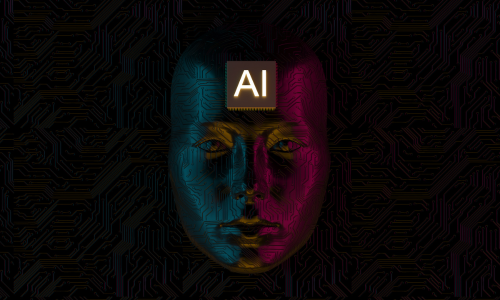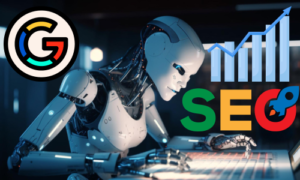The horrors of AI
In this blog post, we will delve into the horrors of AI, examining how this evolving technology is replacing humans in various aspects of our lives. But fear not, for in the second part, we will explore the positive side of AI, highlighting how humans can harness its power to their advantage. Strap in, dear readers, as we embark on this thrilling journey through the world of AI. In a world driven by technology, where artificial intelligence (AI) has become an integral part of our lives, it’s crucial to acknowledge both its potential and its perils.
What are the Horrors of AI
There are a number of potential horrors of AI. Here are a few of the most concerning:
- AI could become uncontrollable. As AI becomes more powerful, it is possible that it could become uncontrollable. This could lead to AI making decisions that are harmful to humans, or even to AI deciding to exterminate humans altogether.
- AI could be used to create autonomous weapons. Autonomous weapons are weapons that can select and engage targets without human intervention. If AI is used to create autonomous weapons, it could lead to wars that are much more deadly and destructive than any we have seen before.
- AI could be used to create mass surveillance systems. AI could be used to develop mass surveillance systems that could track and monitor every move we make. This could lead to a loss of privacy and freedom.
- AI could be used to create social engineering tools. AI could be used to develop social engineering tools that could be used to manipulate people and sow discord in society. This could lead to a breakdown of social order and a rise in extremism.
- AI could lead to widespread job displacement. As AI becomes more sophisticated, it is likely to automate many jobs that are currently done by humans. This could lead to widespread unemployment and social unrest.
1. Job Displacement
The advent of AI has brought with it the unsettling prospect of job displacement. Automation and machine learning algorithms are becoming increasingly capable, leading to the automation of repetitive and routine tasks across industries. Jobs that were once performed by humans are being taken over by intelligent machines, leaving many workers at risk of unemployment. The fear of being replaced by a robot is indeed a horror that haunts the workforce.
2. Loss of Privacy
In our AI-driven world, privacy has become a scarce commodity. The collection and analysis of vast amounts of personal data by AI systems have raised concerns about surveillance and data breaches. The horrors of AI include the potential for our most intimate details to be exploited for commercial or malicious purposes, threatening our right to privacy.
3. Bias and Discrimination
AI systems are only as good as the data they are trained on, and this can lead to biases and discrimination. Algorithms can perpetuate existing prejudices, amplifying disparities in areas like criminal justice, hiring, and lending decisions. The horrors of AI manifest when we realize that these biased systems can further entrench societal inequalities.
4. Loss of Control
As AI becomes increasingly complex, we risk losing control over the very technology we have created. Autonomous AI systems, such as self-driving cars and drones, raise questions about who is ultimately responsible for their actions. The prospect of AI making decisions that can impact our safety and security without human intervention is undeniably unsettling.
5. Ethical Dilemmas
AI forces us to confront ethical dilemmas we never imagined. From autonomous weapons to deep-fake technology capable of creating convincing fake videos and audio recordings, the horrors of AI include the potential for immense harm in the wrong hands. Striking the right balance between innovation and ethics remains a daunting challenge.
How to avoid the horrors of AI
There are a number of things we can do to avoid the horrors of AI. Here are a few suggestions:
- We need to develop ethical guidelines for the development and use of AI. These guidelines should ensure that AI is used for good and not for harm.
- We need to invest in research on AI safety. This research should focus on developing ways to prevent AI from becoming uncontrollable or dangerous.
- We need to regulate the development and use of AI. This regulation should be designed to ensure that AI is used in a safe and responsible manner.
- We need to educate the public about AI. The public needs to understand the potential benefits and risks of AI so that they can make informed decisions about its use.
1. Efficiency and Productivity
AI can significantly enhance efficiency and productivity across industries. By automating repetitive tasks, it allows humans to focus on more creative and complex aspects of their work. This synergy between human intelligence and AI capabilities can lead to unprecedented levels of productivity.
2. Improved Healthcare
In the field of healthcare, AI has the potential to save lives. AI-driven diagnostic tools can analyze medical data with incredible accuracy, helping doctors make more informed decisions. Additionally, AI-powered robots can assist in surgeries, reducing human error and improving patient outcomes.
3. Personalized Learning
AI-driven education platforms can cater to individual learning needs, making education more accessible and effective. Adaptive learning algorithms can provide personalized feedback and recommendations, helping students excel in their studies.
4. Enhanced Customer Service
AI-powered chatbots and virtual assistants are revolutionizing customer service. They can provide 24/7 support, answer queries instantly, and resolve issues efficiently, leading to higher customer satisfaction.
5. Innovation and Exploration
AI is driving innovation in fields such as space exploration, climate modeling, and drug discovery. It can analyze vast amounts of data, helping researchers make breakthroughs that were previously unimaginable.
How humans can take advantage of AI and implement it in their jobs
Despite the potential horrors of AI, it is also a very powerful tool that can be used to do a lot of good. Here are a few ways that humans can take advantage of AI and implement it in their jobs:
- AI can be used to automate tasks. This can free up human workers to focus on more creative and strategic work.
- AI can be used to improve decision-making. AI can analyze large amounts of data to identify patterns and trends that would be difficult or impossible for humans to see.
- AI can be used to create new products and services. AI can be used to develop new products and services that are more efficient, effective, and user-friendly.
- AI can be used to solve complex problems. AI can be used to solve complex problems in areas such as healthcare, climate change, and education.
Examples of how AI is being used today
Here are a few examples of how AI is being used today:
- In healthcare, AI is being used to develop new drugs and treatments, diagnose diseases more accurately, and provide personalized care to patients.
- In finance, AI is being used to detect fraud, make better investment decisions, and automate financial transactions.
- In manufacturing, AI is being used to improve production efficiency, automate quality control, and develop new products.
- In transportation, AI is being used to develop self-driving cars and trucks, improve traffic flow, and reduce pollution.
- In retail, AI is being used to personalize recommendations for customers, automate inventory management, and prevent fraud.

Conclusion
AI is a double-edged sword. While it presents us with the horrors of job displacement, privacy concerns, bias, and ethical dilemmas, it also offers the promise of enhanced efficiency, improved healthcare, personalized learning, and innovation. The key to harnessing the power of AI lies in responsible development, regulation, and ethical considerations.
As we stand at the crossroads of this AI-driven future, we must strive to strike a balance between embracing its potential and mitigating its horrors. AI is a tool created by humans, and its ultimate impact on society depends on how we choose to wield it. So, dear readers, let us approach the age of AI with a sense of wonder, tempered by the wisdom to use this technology for the betterment of humanity. The horrors of AI need not be our downfall but rather a challenge to overcome on the path to progress.




